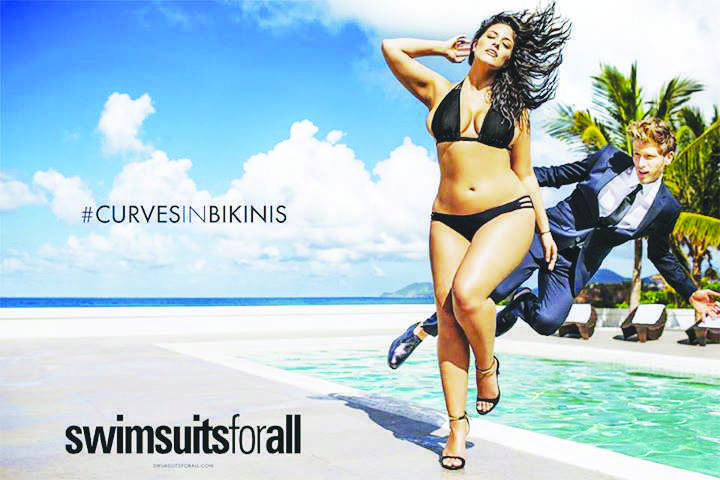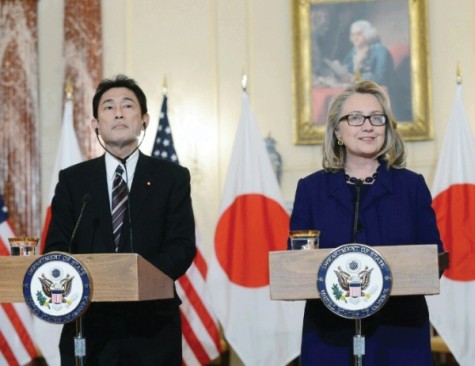Brave new fashion world
Ashely Graham is a trailblazer for all “plus size” models, though she avoids the label as much as possible.
To say the least, I was surprised when I heard the news that Sports Illustrated would be featuring plus size models in their 2015 swimsuit issue. Despite the fact that their photos are not featured on the cover, plus size models Robyn Lawley and Ashley Graham seem to be the two women getting the most hype.
Some people are mystified that Sports Illustrated considers Robyn Lawley to be a plus size model. I can understand their confusion, since from her photos she appears to be just as slender and toned as the next model.
The truth is she is 6’3”, which is tall even in the modeling world. She wears a size 12, and the fashion industry considers sizes 8 through 18 to be plus sizes.
Lawley also looks a lot healthier than some stick-thin models in magazines. Though she is bigger than most, the fact that she is over six feet tall and wears size 12 pants is a far cry from looking relatable in the eyes of most American women.
The average woman in the US is 5’4” and a wears a size 14. A person with these measurements is considered overweight by the Body Mass Index (BMI).
Ashley Graham is the other plus size model featured in the issue. Graham, more than Lawley, represents a shift toward more realistic-looking models.
At 5’10” and a size 14, Graham has recently be selected to be the face of the “Curves in Bikinis” advertisement campaign by the Swimsuits For All company.
In an advertisement clip that went viral on the internet, Graham walks past a group of men in a skimpy black bikini and heels, causing them to go crazy and jump into a pool. It achieved its desired effect: it got people talking.
Being able to inspire discussion and change is exactly what Graham has wanted to do with her career. She considers herself a “body activist” and in an interview with CNN she said that this is “the curvy girl era.”
Graham is truly a great role model for young girls who cannot identify with the popular portrayal of women in the media.
The advent of an age of healthier-looking models has been a long time coming. In 2012, Vogue magazine made a statement that “too young and too thin is no longer in.” They admitted to “unknowingly” featuring models who were under 16 and had eating disorders.
The main fashion organizations in Spain and Italy also contributed to the healthy-image effort by banning the featuring of models that are below the normal BMI level.
Of course, the men that play the supporting roles in the “Curves in Bikinis” advertisements have all the typical male model attributes: toned muscles, ripped six-packs, and generally Adonis-like features.
Isn’t that a bit of a double standard? That’s not fair to all the guys out there who can’t catch a break when it comes to their weight. This image of the impossibly toned male body is the only one being portrayed in the fashion industry.
This encourages women (and men, for that matter) to enter the dating scene with ridiculously high standards for their boyfriend’s appearance, since that is the only ideal that has been expressed in the magazines.
For a society that puts such a high value on equality, I’m surprised that more people have not voiced their opinion on this topic. Sports Illustrated has made a huge step forward by featuring plus size models, thereby bringing this issue into the mainstream media.
So it appears that the era of the bulimic model is coming to a close. Models like Graham are making this happen by flaunting their curves and encouraging others to do the same.
No one should feel ashamed of who they are: the first step to loving yourself is feeling comfortable in your own skin.

Sarah Metzel is the current Editorals Editor of The A-Blast. She joined the staff sophomore year as a staff writer.
Metzel was accepted into the Young...









